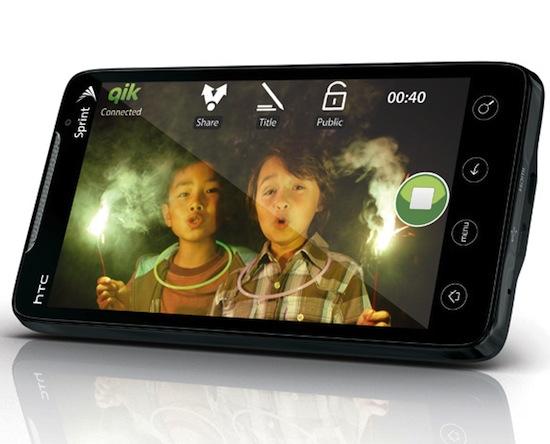
What's Good: 4.3-inch screen, Android 2.1, 1 GHz Snapdragon processor, 8.0-megapixel camera.
What's Bad: Battery life is quite bad. 4G only available in select markets.
The Verdict: The EVO 4G is a powerhouse with a beautiful display, great camera, and speedy processor. Just watch that battery life.
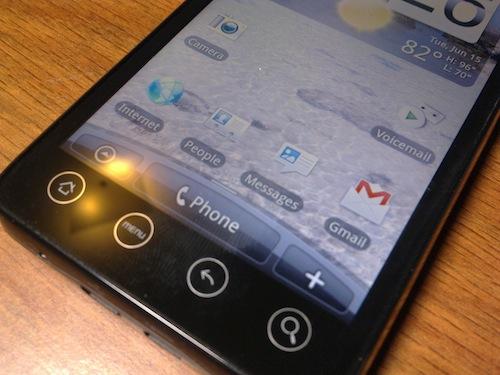
When the WiMAX-enabled HTC EVO 4G was announced at CTIA 2010 in March, I was astounded. The common complaint surrounding the HTC HD2 was "it needs Android," and HTC delivered, along with additional upgrades. With a 1 GHz Snapdragon processor, Android 2.1 with HTC's Sense UI, 8.0-megapixel camera, 1.3-megapixel front-facing camera with video calling capabilities, Wi-Fi, 3G, and 4G connectivity, I remember thinking to myself "wow, Sprint and HTC went all out and made a fantastic device."
Then the DROID Incredible launched on Verizon Wireless, and the gap between "other Android devices" and "EVO" shrank. Though the Incredible offered a 3.7-inch AMOLED display versus the 4.3-inch WVGA screen found on the EVO, features like the 8.0-megapixel camera, Snapdragon processor, Android 2.1, and Sense were shared between the two devices. The EVO still led the pack thanks to a few choice options omitted from the Incredible, but I'd say that the Incredible's spec sheet and Verizon's perceived network superiority in the US caused a lot of Sprint-bound Verizon customers to stay put.
Launch timing aside, the HTC EVO 4G is an awesome device and reigns supreme as the king of Android devices (though, given today's phone market, it won't last long). While it's not the first WiMAX-enabled device in the US (Samsung Mondi and Nokia N810 WiMAX Edition take that crown), the EVO 4G is the first device to offer both 3G and 4G connectivity. That being said, it's not without its flaws.
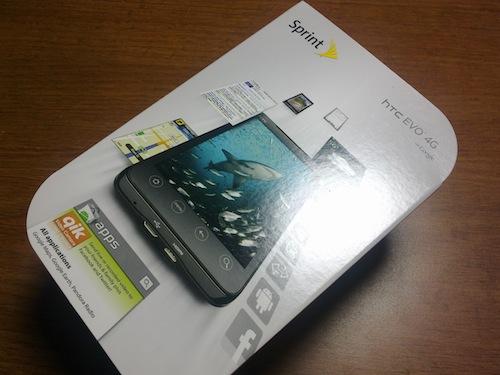
The HTC EVO 4G ships in a box that resembles a TV dinner. Inside, you'll find the battery, AC adapter, USB cable (which doubles as the power cord), 8 GB microSD card (installed in phone), and instruction manuals. Coming in at 4.8 inches tall by 2.6 inches wide by 0.5 inch thick and weighing 6.0 ounces, it's slightly thicker and heavier than the HTC HD2. The 4.3-inch WVGA screen is beautiful and huge. Despite offering 65,536 colors, the display is crisp, vibrant, and full of color. It's reflective though, so the downside comes when viewing it outdoors - it's challenging to see in direct sunlight.
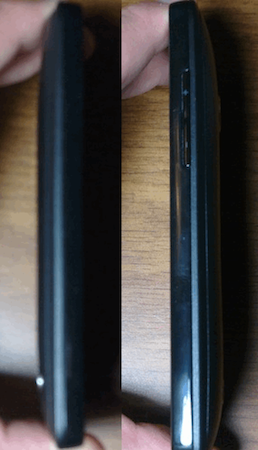
The EVO is pretty minimalist when it comes to exterior buttons. The right side of the EVO contains the volume rocker, while the power button and 3.5mm headphone jack can be found on the top of the device. The 8.0-megapixel camera, speaker, and kickstand are both located on the back of the device, while four capacitive buttons (home, menu, back, search) and the front-facing camera are located on the front. Like the Incredible, the camera has a red "ring" around it - when you remove the back cover, you'll notice that the innards are painted red (including the battery). It's a neat little touch, though I was surprised that it wasn't Sprint yellow. I like the way the battery back clips on (making the device feel a bit more unibody), but I found myself missing metal devices like the Nexus One.
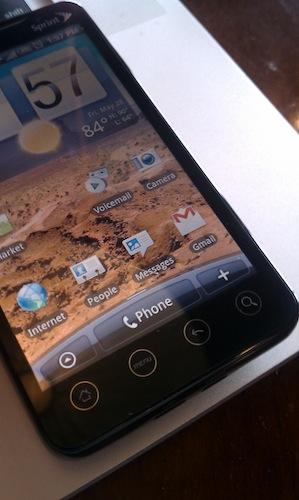
Similar to the DROID Incredible, Nexus One, and HD2, the EVO 4G offers a 1 GHz Snapdragon processor. Though Android has never been a huge system hog, Sense UI and other overlay software has historically bogged down Android devices. Thanks to the fast processor and revised software, everything runs smoothly. Since you can't store apps to a microSD card in Android 2.1 (out of the box, at least), I found myself missing the 8 GB of internal storage that was offered on the Incredible.
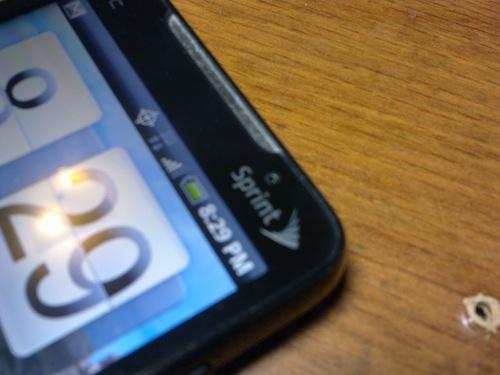
If you've read any of my reviews, you're aware that I am a huge fan of HTC's Sense interface. I like the usability and features that Android provides, but Sense UI takes it to a more consumer-friendly level with helpful widgets and tweaks to the vanilla Android software. The level of integration with Google services is second to none (and rightfully so). Google Maps, combined with Google Navigation, is absolutely fantastic; especially when combined with localized Google search results. Throughout the entire vacation, I was the de-facto guy for directions.
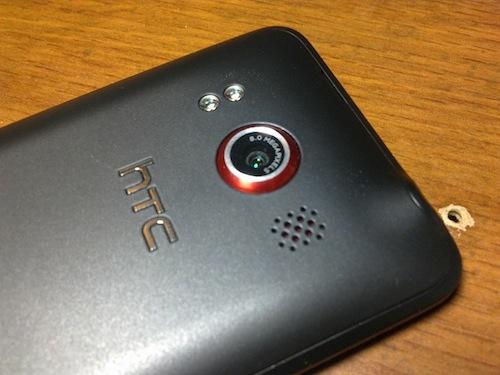
The device ships with an 8.0-megapixel camera with autofocus, along with a VGA front-facing camera for video chatting. Editing options include brightness, contrast, saturation, sharpness, color choices (grayscale, sepia, negative, polarize, etc.), white balance, and more. In my testing, picture quality was absolutely fantastic. Complete with a flash, the camera performed fantastically and provided great pictures in most situations I was able to throw at it. The EVO also offers a video camcorder, and image quality was good. Though I'm in the group of people that would only use it occasionally, video calling is a fantastic feature. While on vacation last week, I wanted to check on my cat. I video called up a friend of mine, who drove to my home and put my cat on camera for me to see. Thanks to the kickstand on the back of the device, I was able to prop up the device and video chat handsfree.
I've tested the EVO in Charlotte and select markets in South Carolina, and call quality has been fantastic. Frankly, I'm blown away by the noise cancellation technology in the device. In my tests, I tried everything from turning up my radio to the point where it was shaking my car to calling in some of the loudest stores I could find. Each and every time, my callers reported minor to no background noise. Needless to say, it's a great addition for those that walk and talk on a regular basis (such as myself). Additionally, I paired the Plantronics Voyager Pro Bluetooth headset to the device without issue, and callers reported a pleasant experience.
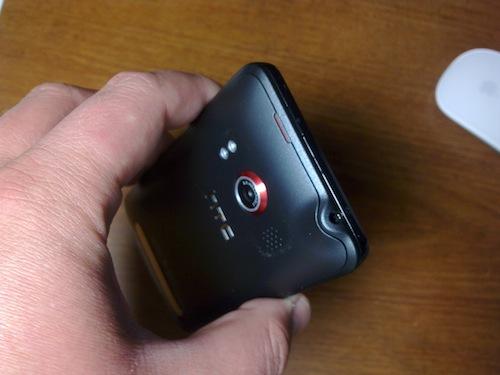
The EVO 4G sports a 1500 mAh battery with a rated talk time of 5.2 hours with EVDO (3G) connectivity, and about 6 days of standby time. Like the DROID Incredible, the EVO's battery life leaves a lot to be desired. With moderate use including calling, text messaging, browsing the internet, using apps, two widgets, and use of the Android Market, I typically make it about ten hours before a charge is required. Though task killing programs such as Advanced Task Killer have helped (I'd recommend jumping the gun and buying the paid version), I'm still unable to make it through a full work day. On weekends, my typical light usage allows me to make it to the evening prior to recharging. Google has a legitimate issue on its hands with battery life, and it's something I hope they address in future versions. I have no problem with charging daily, but having to pull out a charger and find an outlet in the afternoon makes the device unappealing to those that travel regularly.
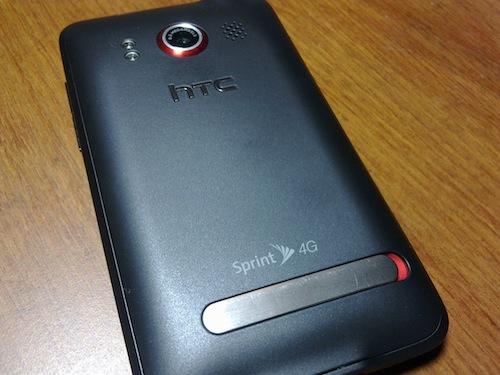
It's the EVO 4G, so WiMAX connectivity is a given, but it's offers a superb experience regardless of whether you're using 3G or 4G thanks to a huge screen and functional web browser. Browsing speeds on both 3G and 4G were very good. Using 3G, the full CNN webpage loaded in about 12 seconds, and the PhoneDog homepage loaded in 21 seconds. Other data-intensive tasks such as Google Maps, the Android Market, The Weather Channel, the Amazon MP3 store, and other downloaded apps worked well. The Charlotte metro area is a 4G market, and I'm still testing 4G data speeds. Stay tuned for a full article comparing WiMAX and EVDO.
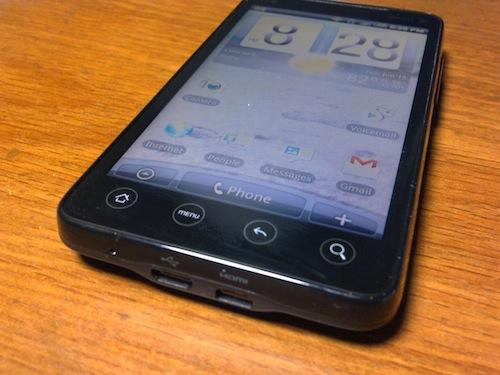
Out of all of the devices that Sprint carries, the HTC EVO 4G is the carrier's "wow" phone. It's an exclusive in the leagues of the Apple iPhone, Motorola DROID, HTC DROID Incredible, and could be the driver for a quarter of customer growth (which the company needs). With a 4G connectivity, fast processor, and near-flawless performance, it's a fantastic multimedia and internet device - and is good in the call department, too. If you travel on a regular basis, be sure to carry a second battery and a car charger.